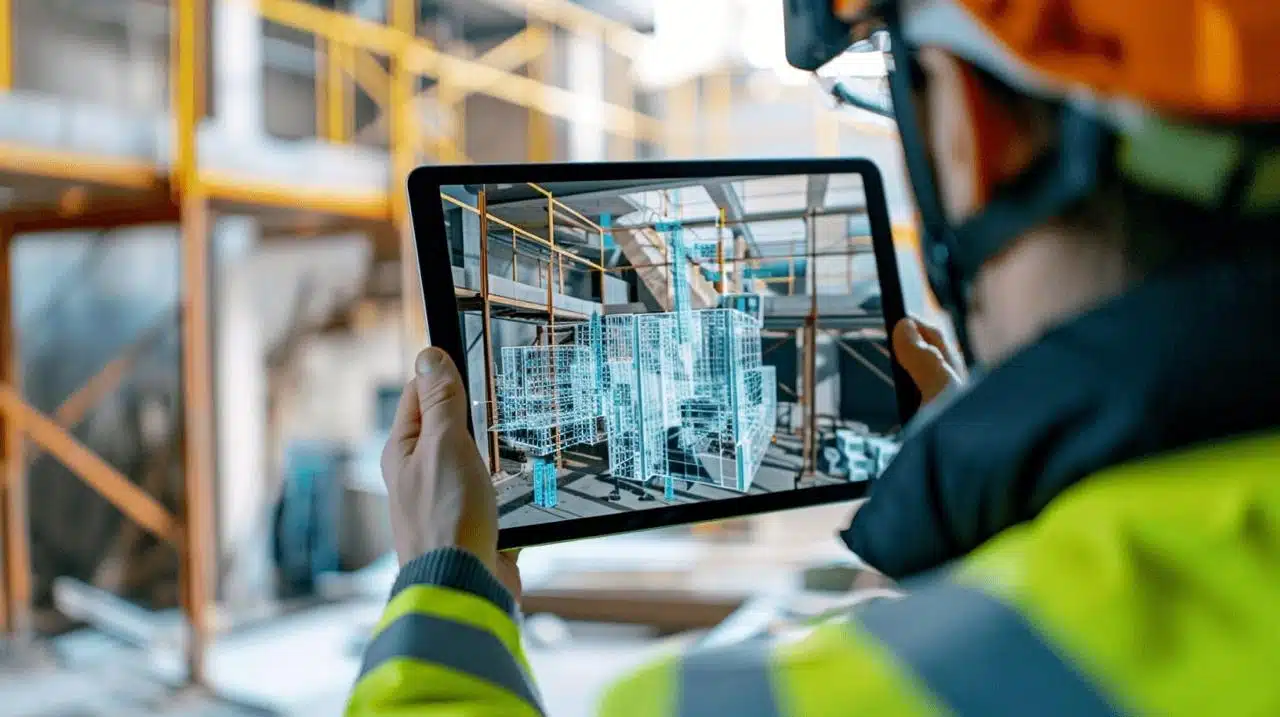In the evolving landscape of construction and architectural design, the integration of technology has been a game-changer, especially in the realms of Building Information Modeling (BIM) and Augmented Reality in short Augmented Reality BIM.
The fusion of AR with BIM visualization is revolutionizing the industry, offering innovative ways to plan, design, construct, and manage buildings and infrastructure.
This article delves into how augmented reality is enhancing BIM visualization, transforming construction processes, and setting new standards for efficiency, precision, and collaboration.
Augmented Reality: A Brief Overview
Augmented Reality (AR) is a technology that overlays digital information—such as images, videos, and 3D models—onto the real world. Unlike Virtual Reality , which creates a fully immersive digital environment, AR enhances the user’s perception of the real world with additional layers of digital information.
This capability has found significant applications in various fields, including education, healthcare, retail, and notably, construction and architectural design.
BIM Visualization: The Foundation of Modern Construction
Building Information Modelling is a digital representation of the physical and functional characteristics of a facility.
It goes beyond traditional 2D drafting to a multidimensional approach that includes spatial relationships, geographic information, and quantities and properties of building components.
BIM visualization allows stakeholders to see a building through its lifecycle, from conception to demolition, facilitating better decision-making and communication.
The Convergence of AR and BIM Visualization
The integration of AR with BIM visualization brings a new dimension to construction and design.
This synergy allows for the real-time overlay of a building’s digital twin over a physical space, enabling architects, engineers, contractors, and clients to visualize the end product in its intended environment before construction even begins.
Enhanced Visualization and Understanding
AR technology transforms BIM data into interactive 3D models that can be superimposed onto the physical world. This means stakeholders can walk through a construction site and see the future building as if it were already built.
This level of visualization aids in understanding complex structures, identifying potential design issues before they become costly problems, and enhancing communication among all parties involved.
Improved Accuracy and Efficiency
With AR, measurements and modifications can be visualized in real-time, directly on the construction site. This significantly reduces errors and rework, as adjustments to the design are made with a comprehensive understanding of the physical context.
Moreover, AR can streamline the verification process of completed work against the BIM model, ensuring that the construction adheres to the planned specifications.
Enhanced Collaboration and Stakeholder Engagement
AR in BIM visualization fosters a collaborative environment where stakeholders can interact with the model in real-time, regardless of their location.
This level of engagement ensures that feedback is incorporated early and effectively, leading to a more streamlined decision-making process. Additionally, clients can visualize and understand the project in a more tangible way, leading to higher satisfaction levels.
Training and Safety
AR also plays a crucial role in training and safety on construction sites. By superimposing construction models and safety protocols onto the physical site, workers can receive immersive training that prepares them for the specific conditions of their project.
This not only improves safety but also enhances the efficiency and quality of the construction work.
The Future of Construction with AR and BIM
The integration of AR with BIM is still in its early stages, but its potential to transform the construction industry is immense. As these technologies continue to evolve and become more accessible, their adoption will likely become standard practice, leading to smarter, safer, and more efficient construction processes.
The future of construction lies in the seamless integration of digital information with the physical world, and AR in BIM visualization is a significant step toward that future.
In conclusion, the combination of AR and BIM visualization is a powerful tool that revolutionizes the construction and architectural design industry.
By enhancing visualization, improving accuracy and efficiency, fostering collaboration, and ensuring safety, AR is setting a new standard for how buildings are designed, constructed, and managed.
As technology advances, the possibilities for further integration and innovation seem limitless, promising a future where construction is smarter, faster, and more sustainable.
Lucas Noah, armed with a Bachelor’s degree in Information & Technology, stands as a prominent figure in the realm of tech journalism. Currently holding the position of Senior Admin, Lucas contributes his expertise to two esteemed companies: OceanaExpress LLC and CreativeOutrank LLC. His... Read more
